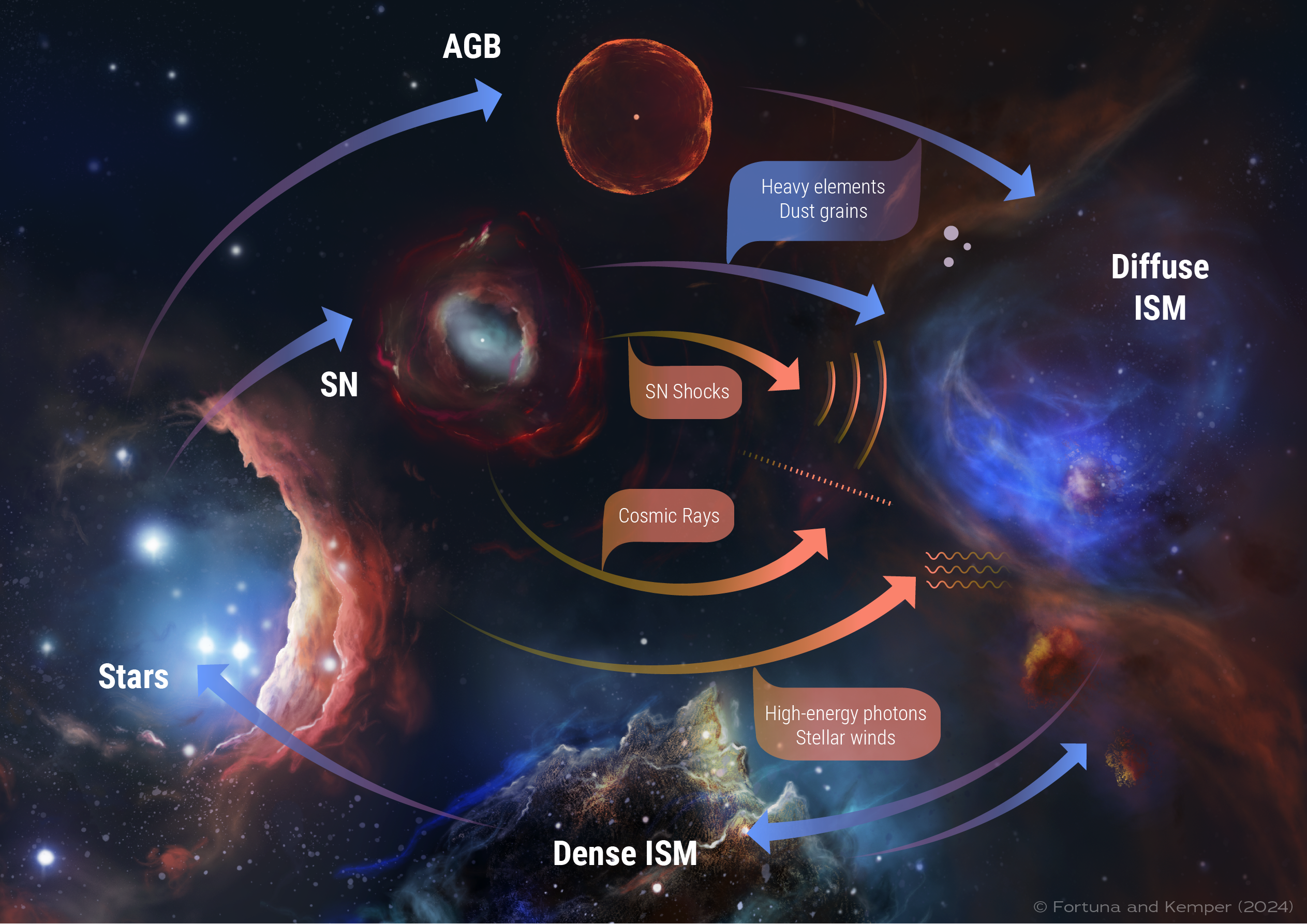Fortuna and Kemper (2024)
Illustration/Infographic
The life cycle of dust. The blue arrows follow the evolution of dust. Starting from the bottom and moving clockwise, the cold clouds of gas and dust in the dense regions of the interstellar medium (ISM) provide the environment for star formation. After evolving from the main sequence, the ultimate fate of a star depends on its mass: late in their lives, before they end up as white dwarfs, low-to-intermediate-mass stars evolve into asymptotic giant branch (AGB) stars, a phase in which they experience significant mass loss (upper-left arrow). High-mass stars explode as supernovae (SN, top left, bottom arrow), forming neutron stars or black holes. The heavy elements and dust particles produced by the stars in the late stages of their lives are thus ejected into the environment, enriching the ISM (upper arrows). At the same time, all these phases provide feedback mechanisms that destroy the dust in the ISM (orange arrows in the middle): high-energy photons and stellar winds from stars, shock waves from the SN, cosmic rays. Dust particles also grow in the diffuse ISM. They can then cool and condense contributing to the dense ISM, which in turn is the birthplace of new stars, starting a new life cycle of dust. Image credit: Fortuna and Kemper (2024)



